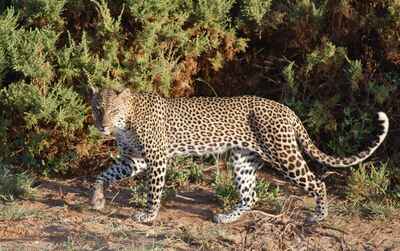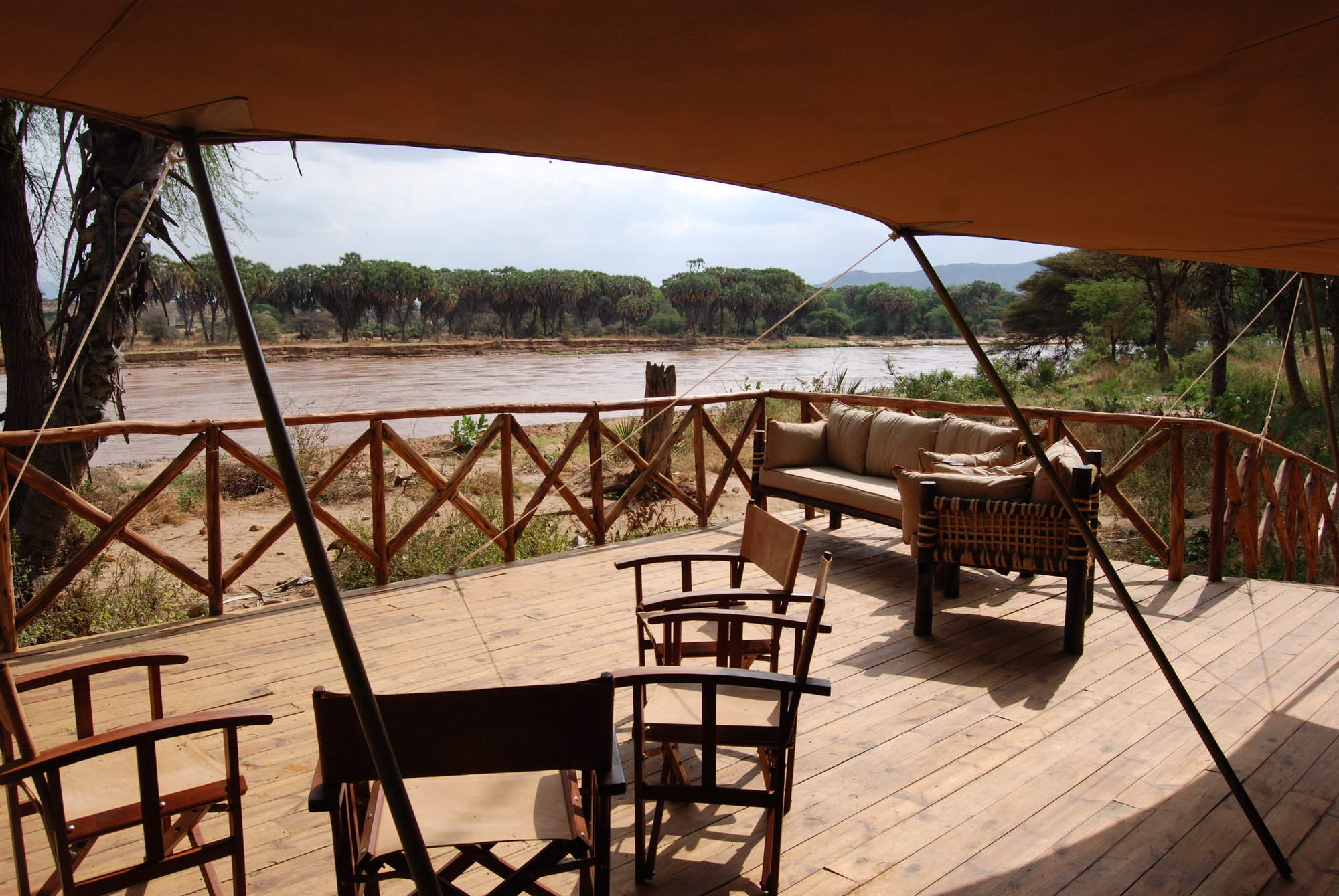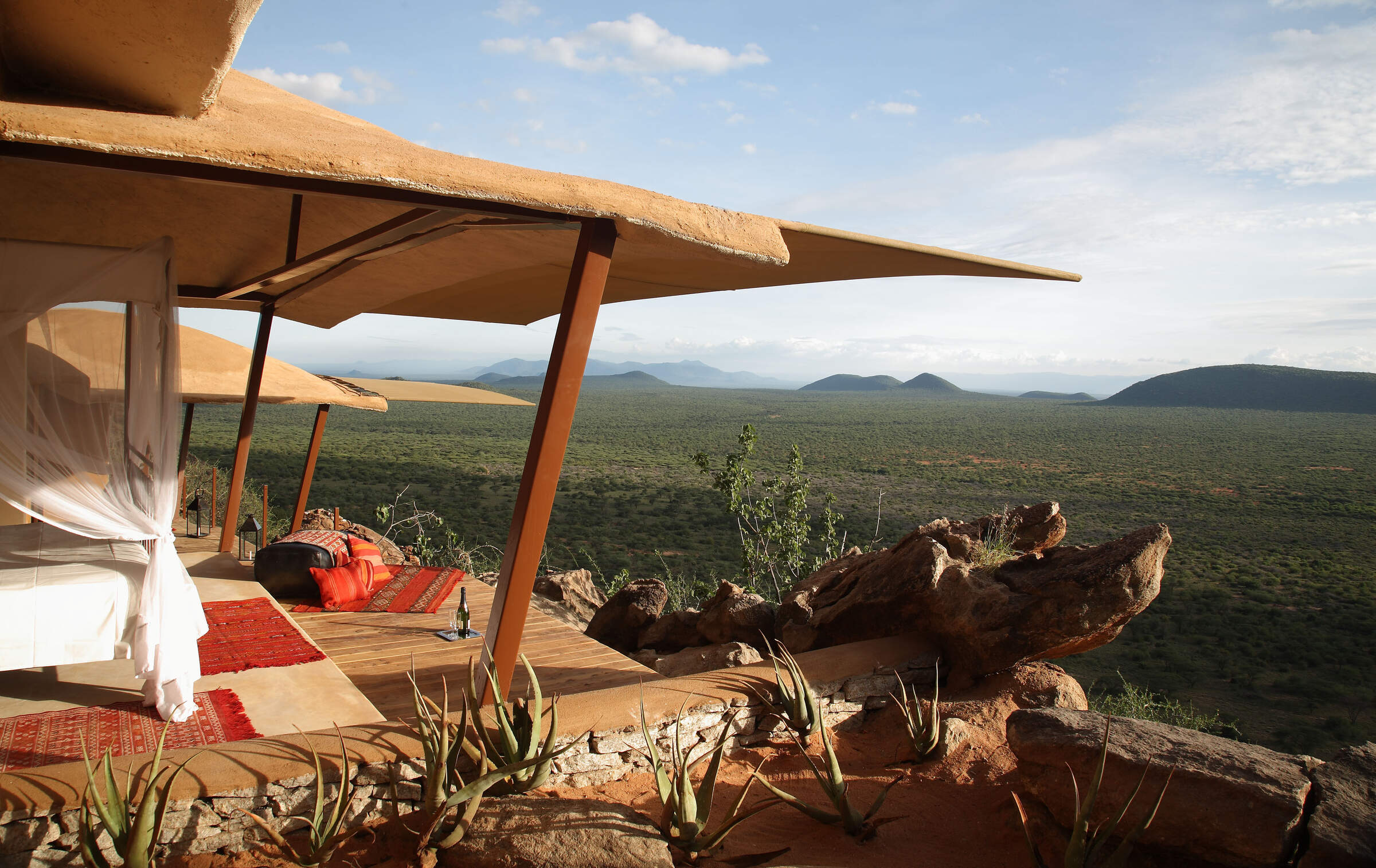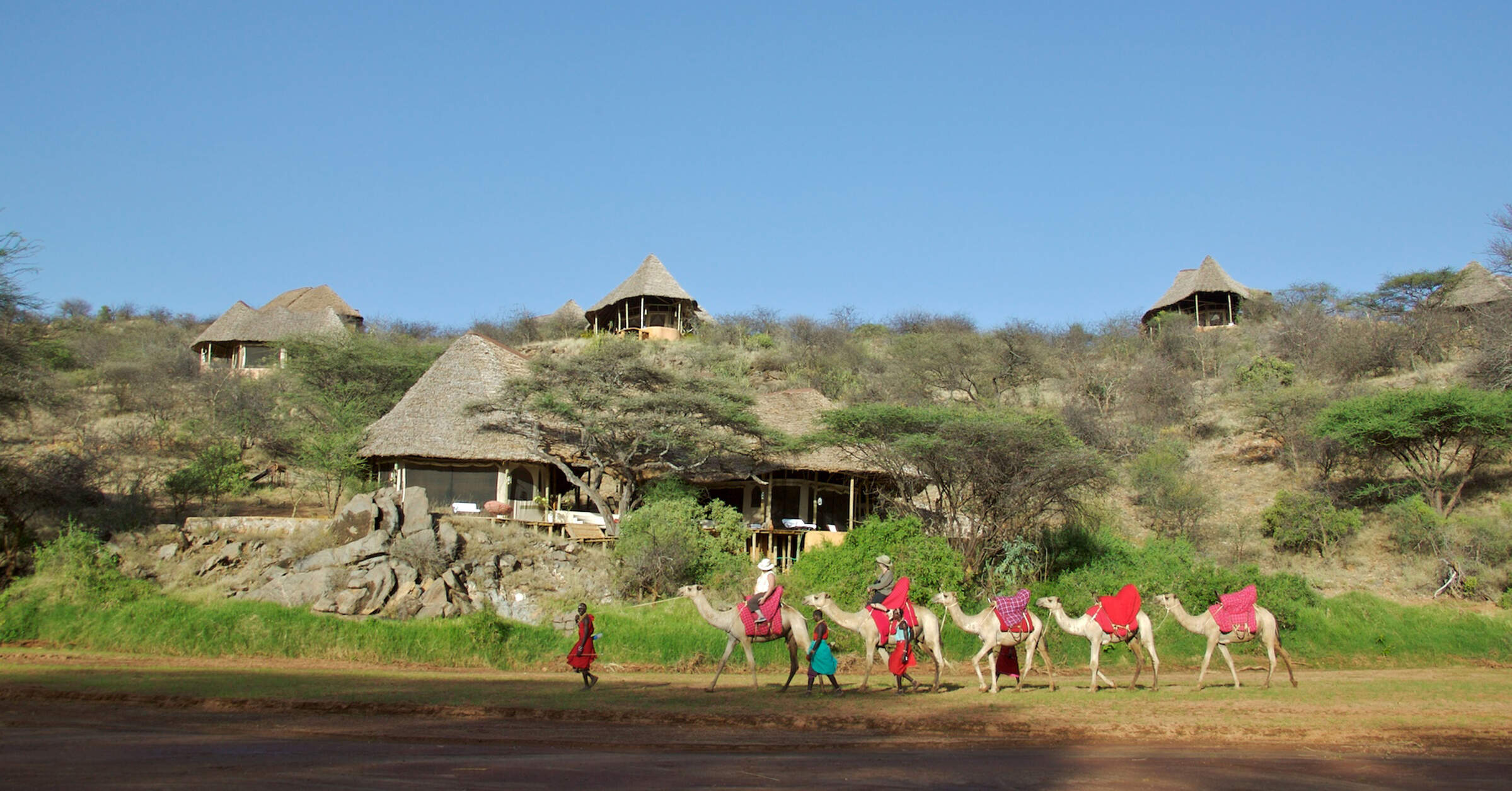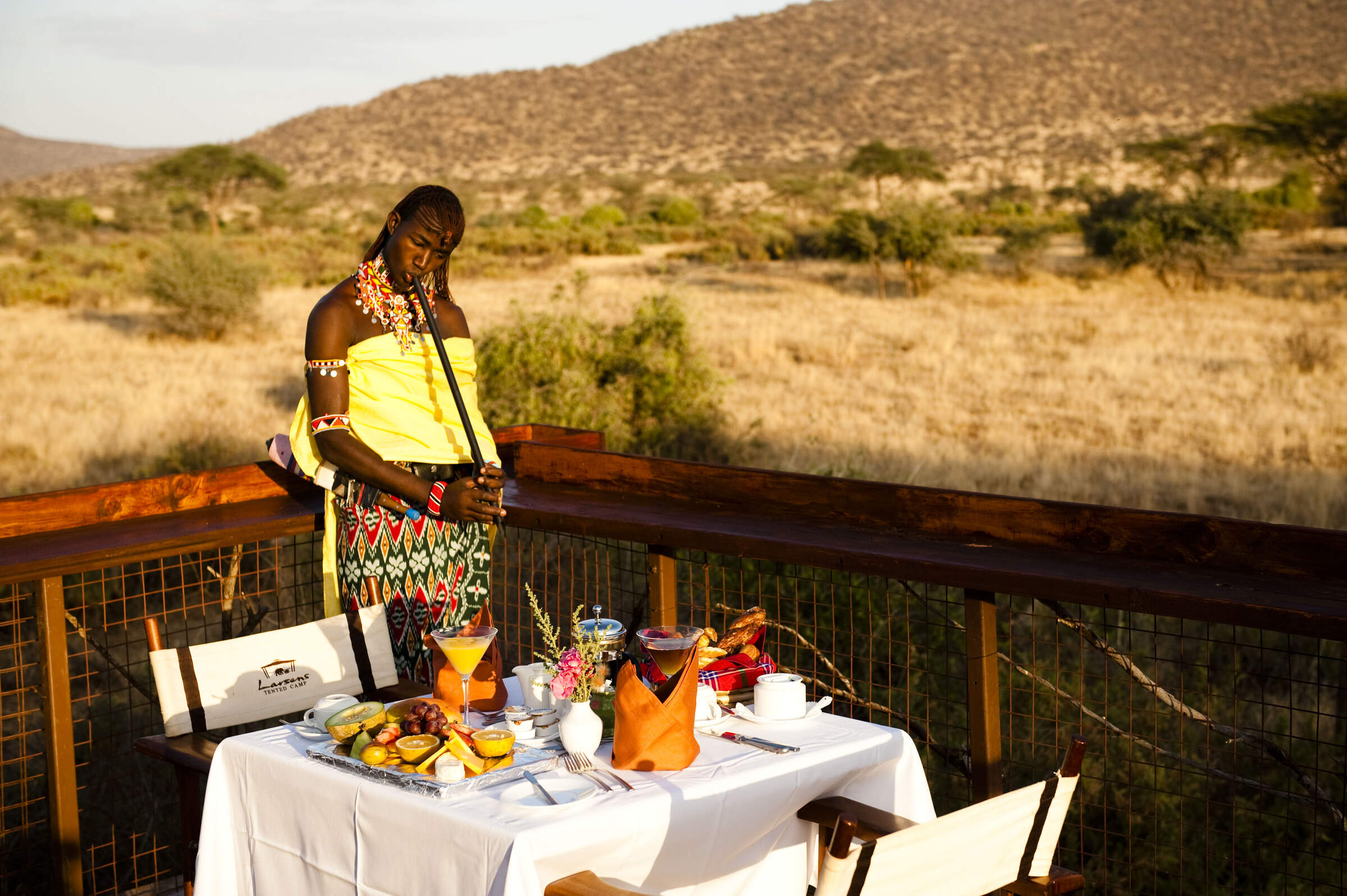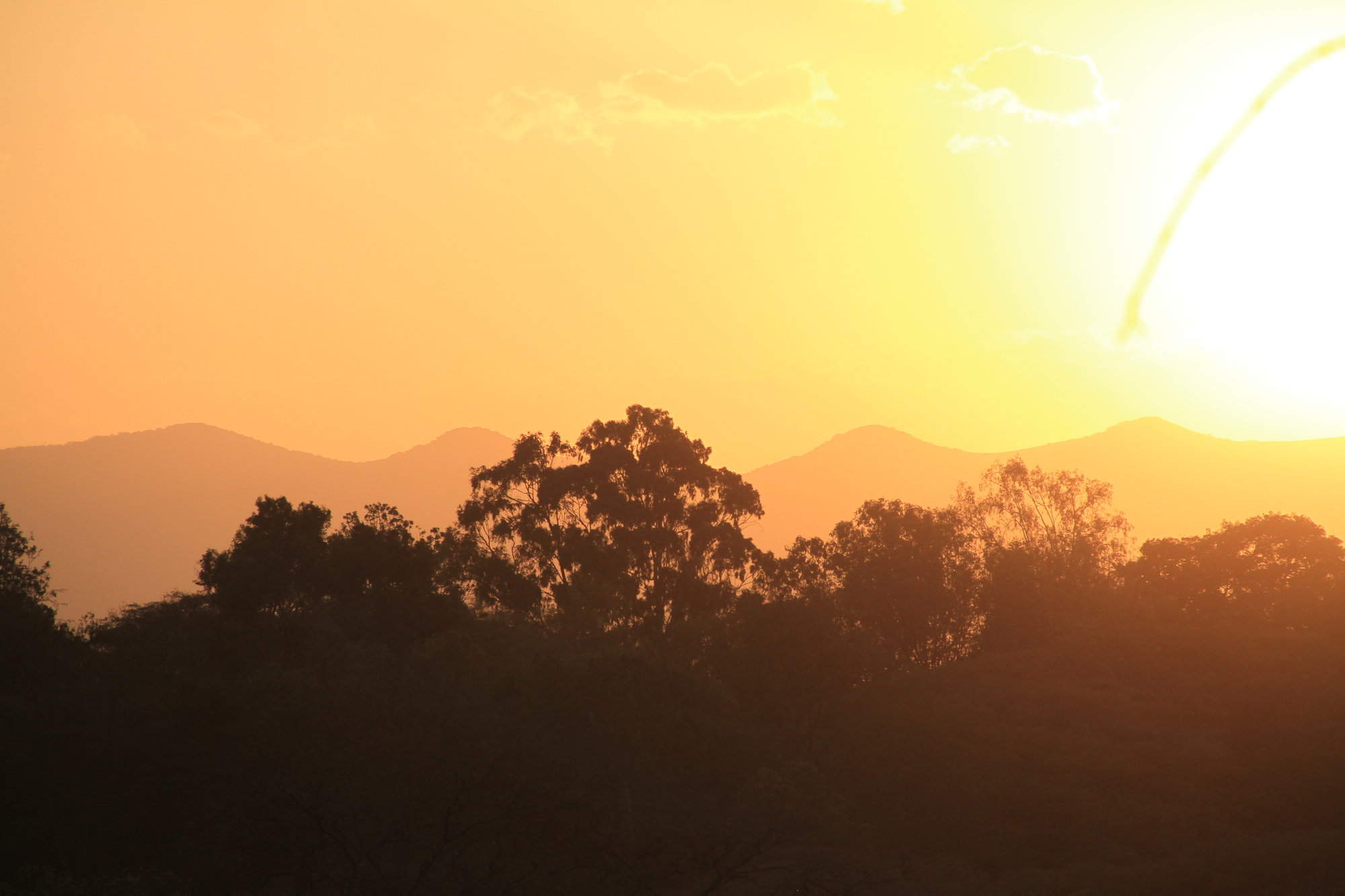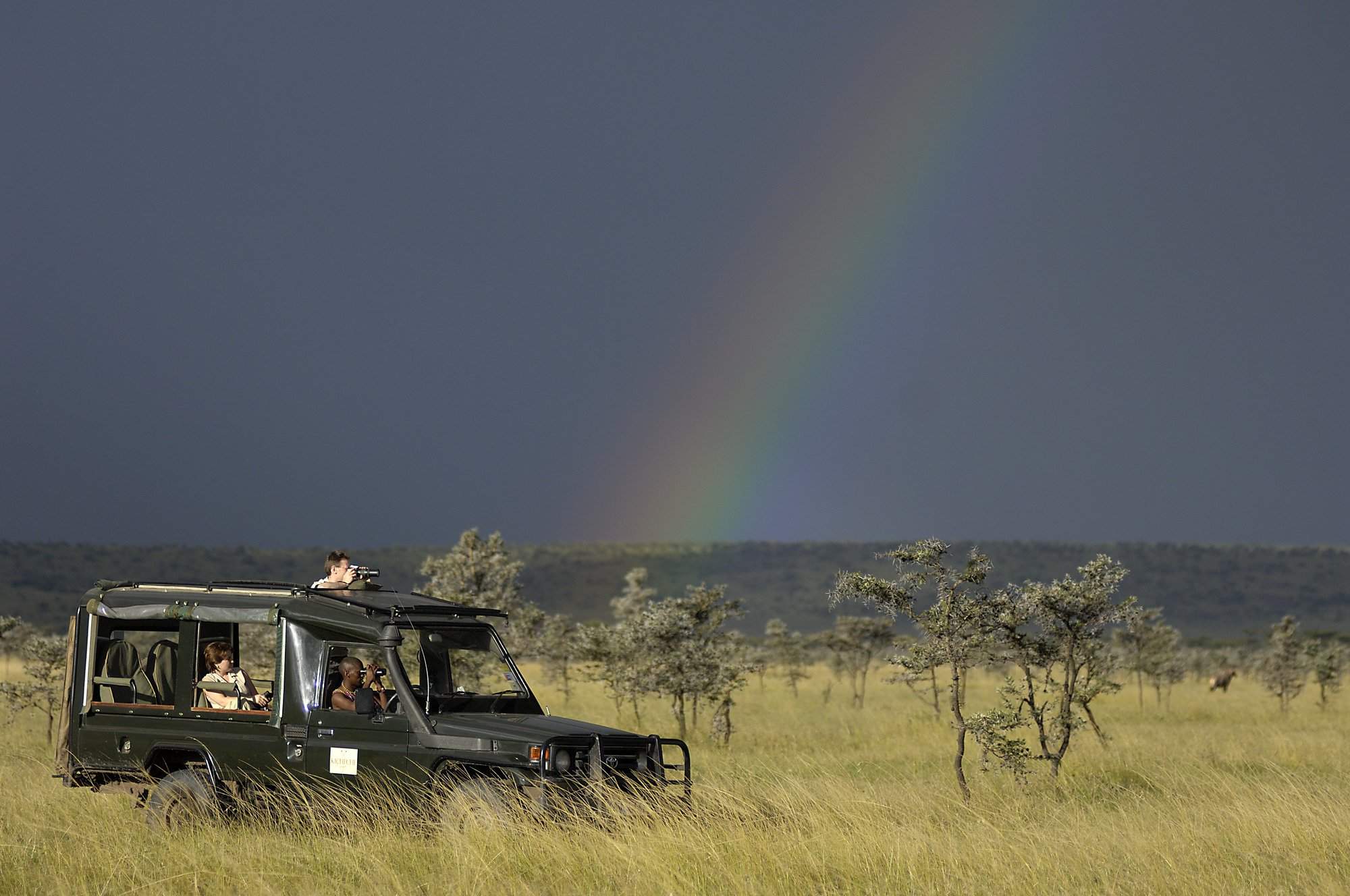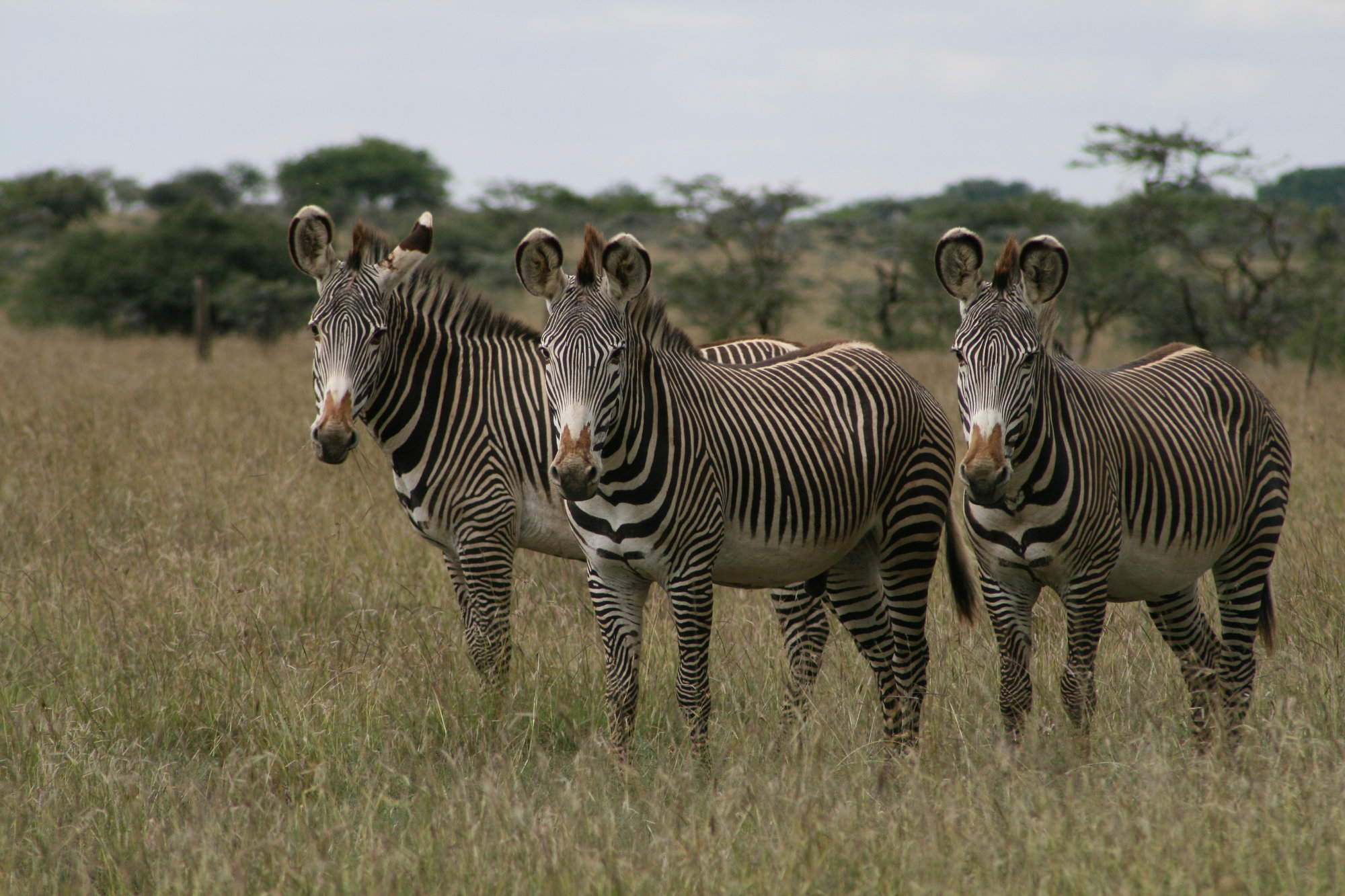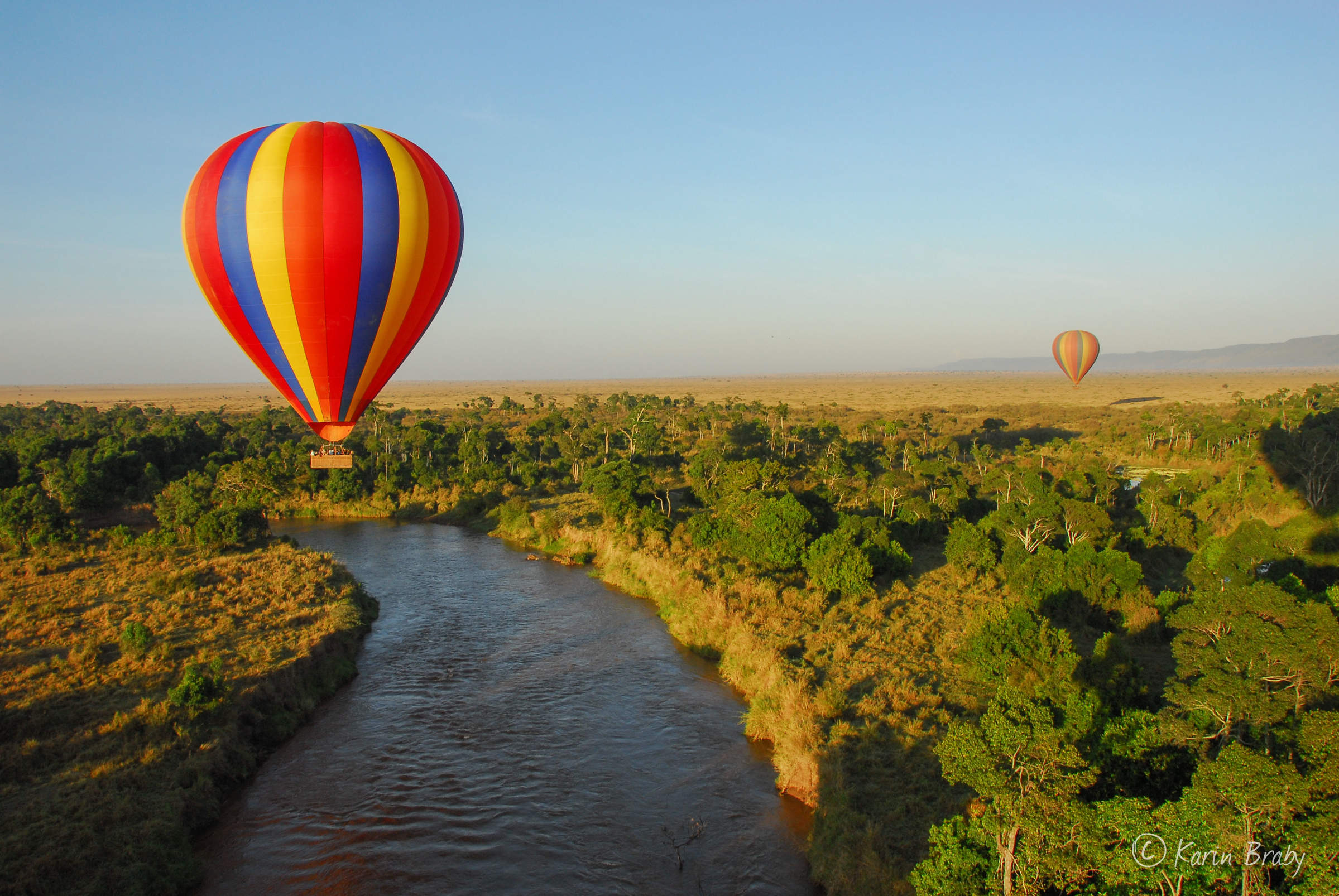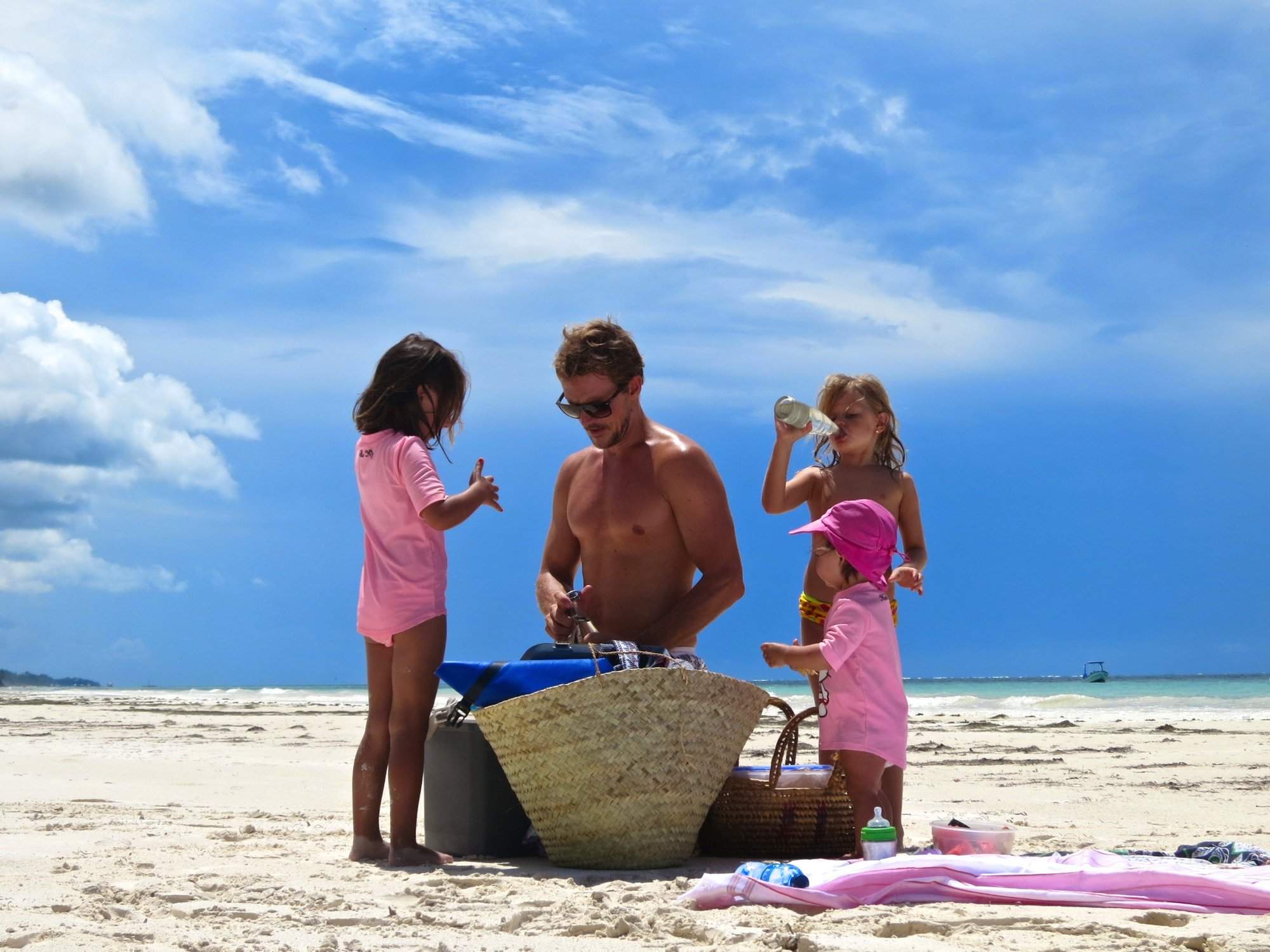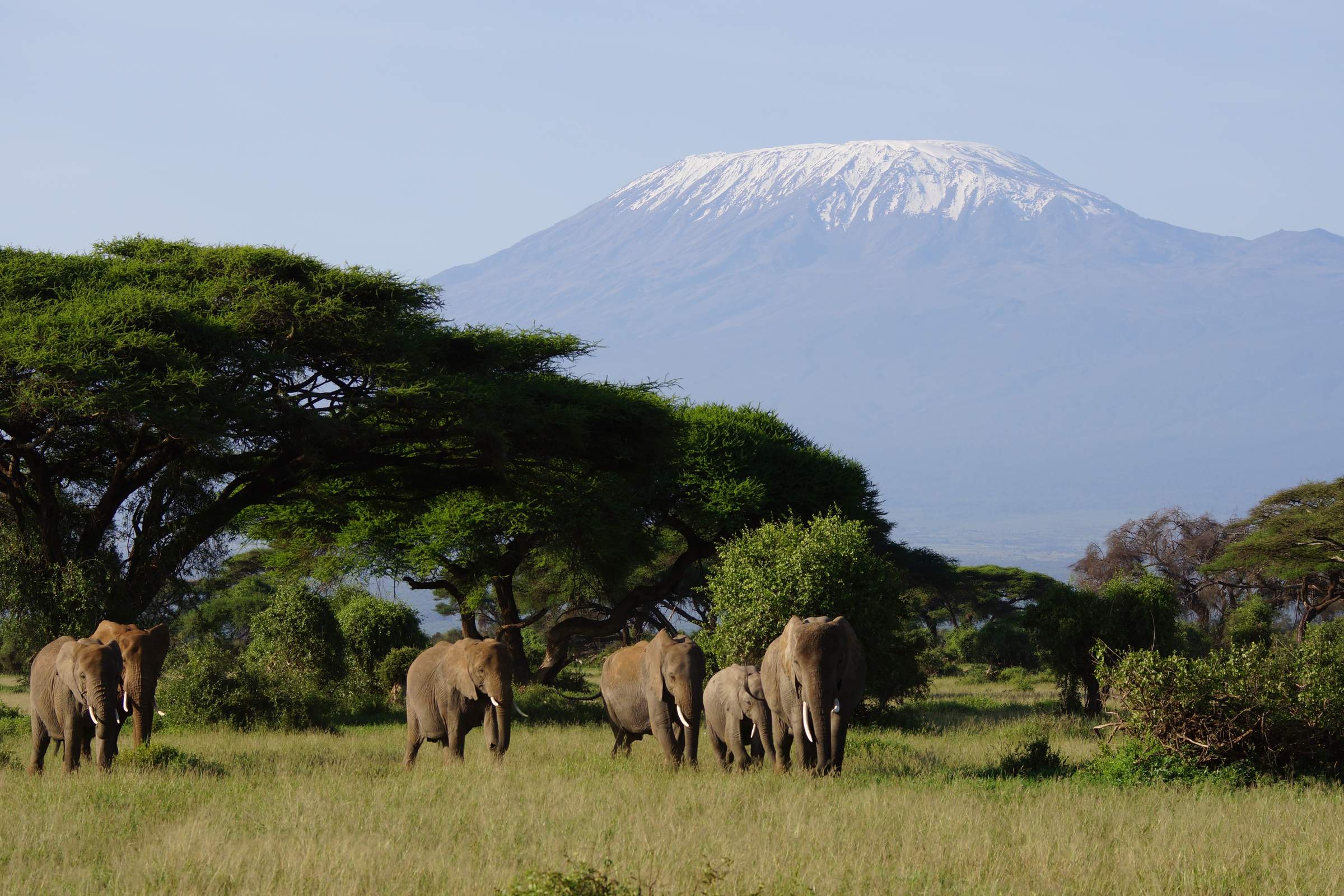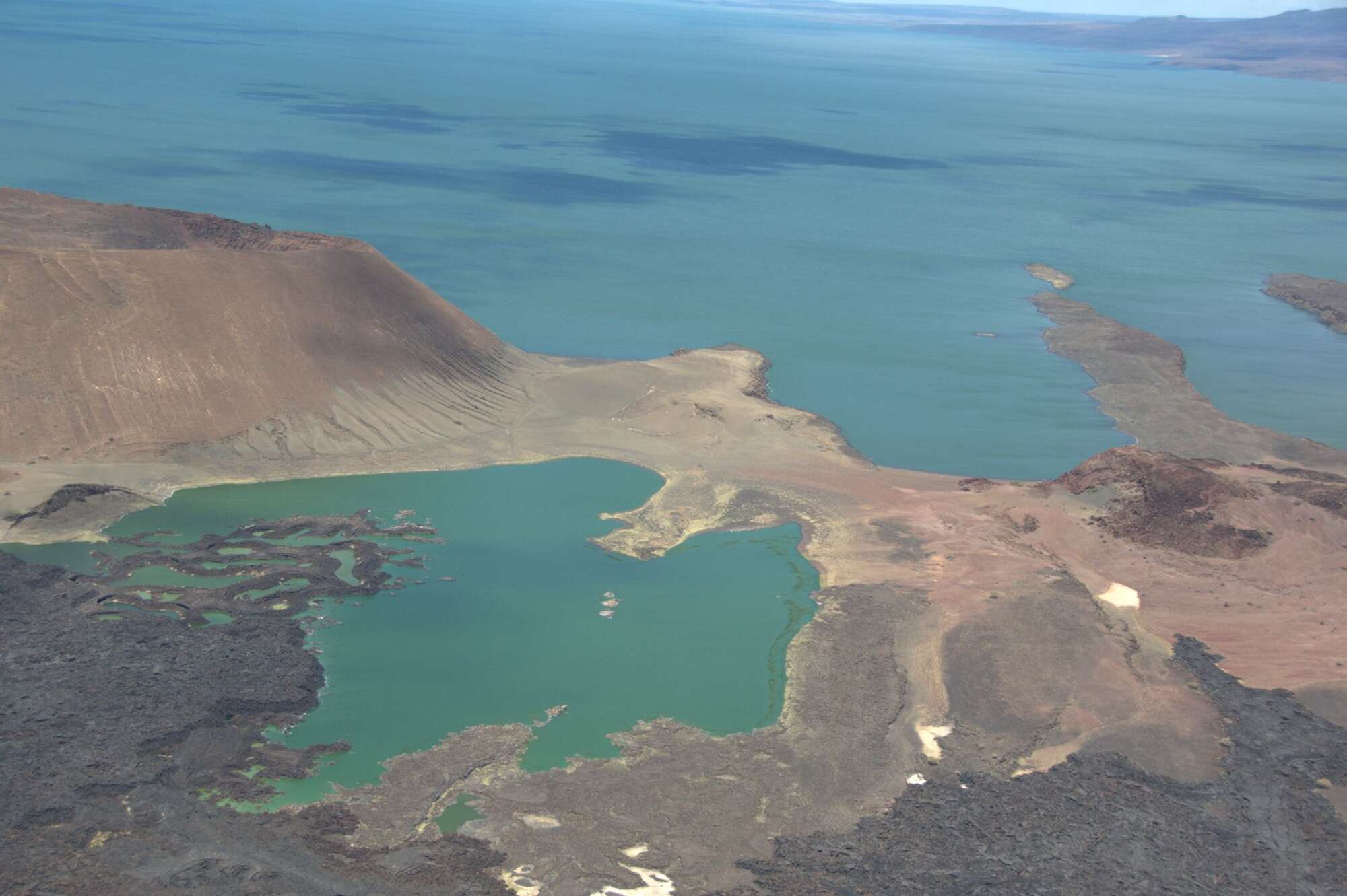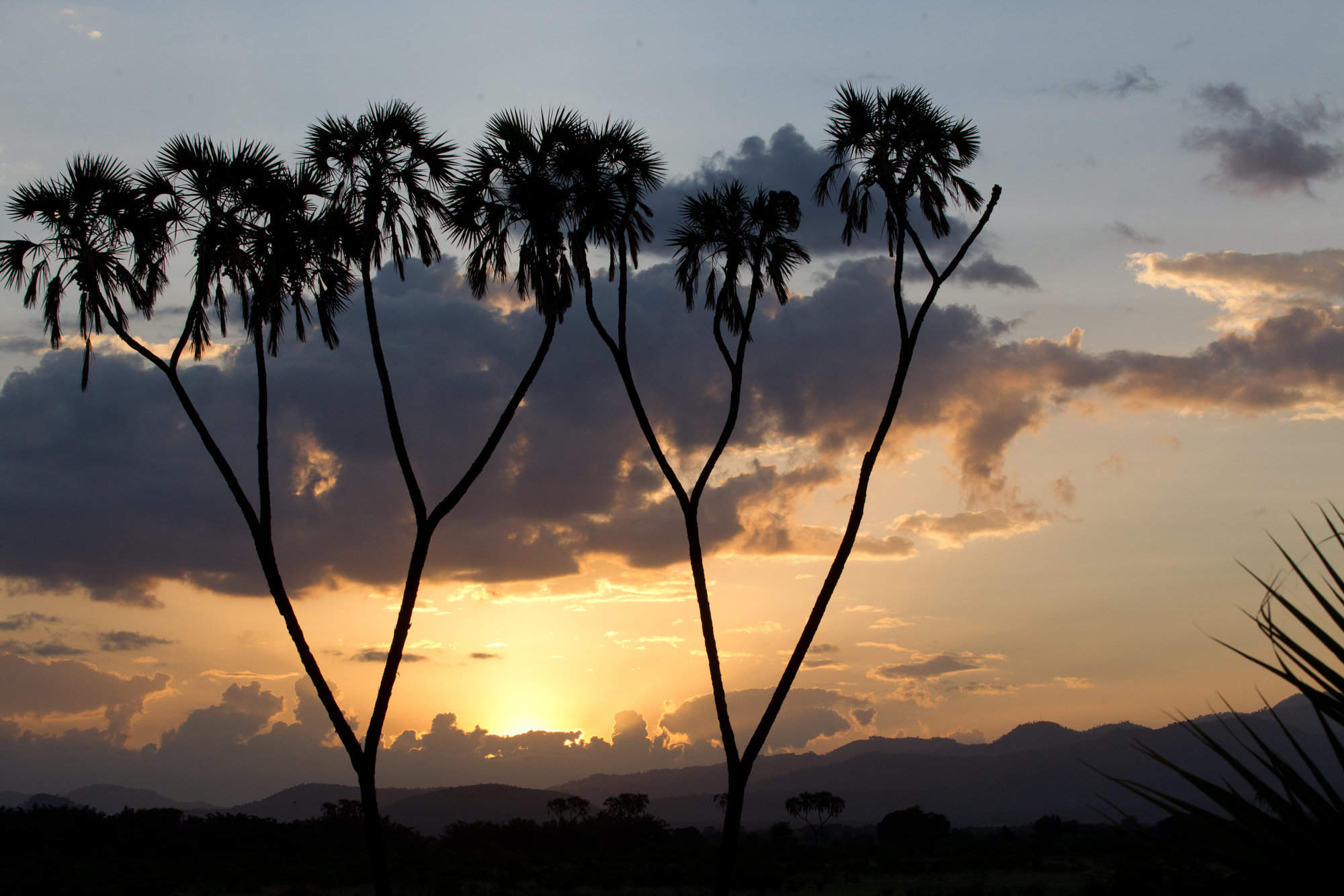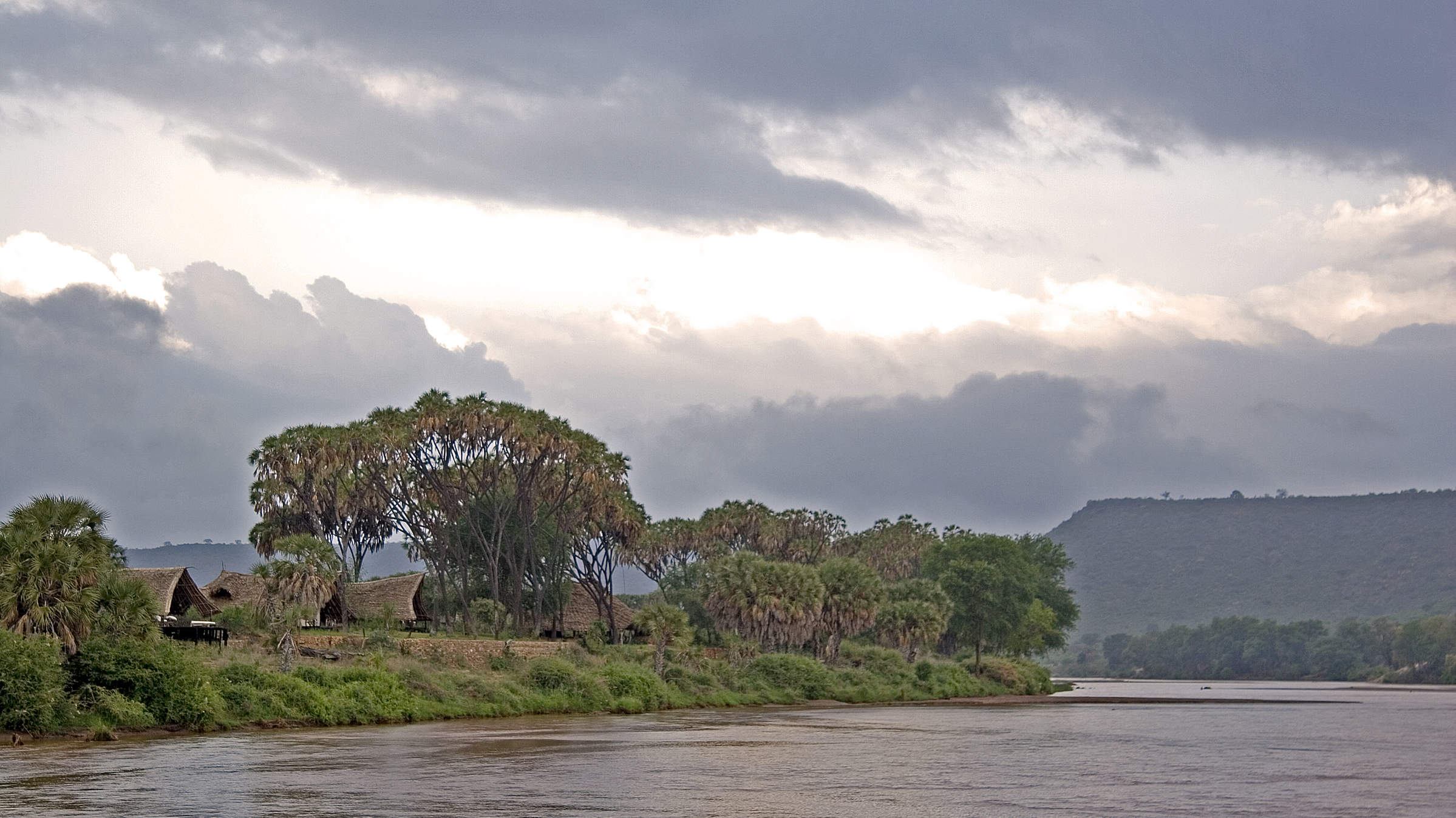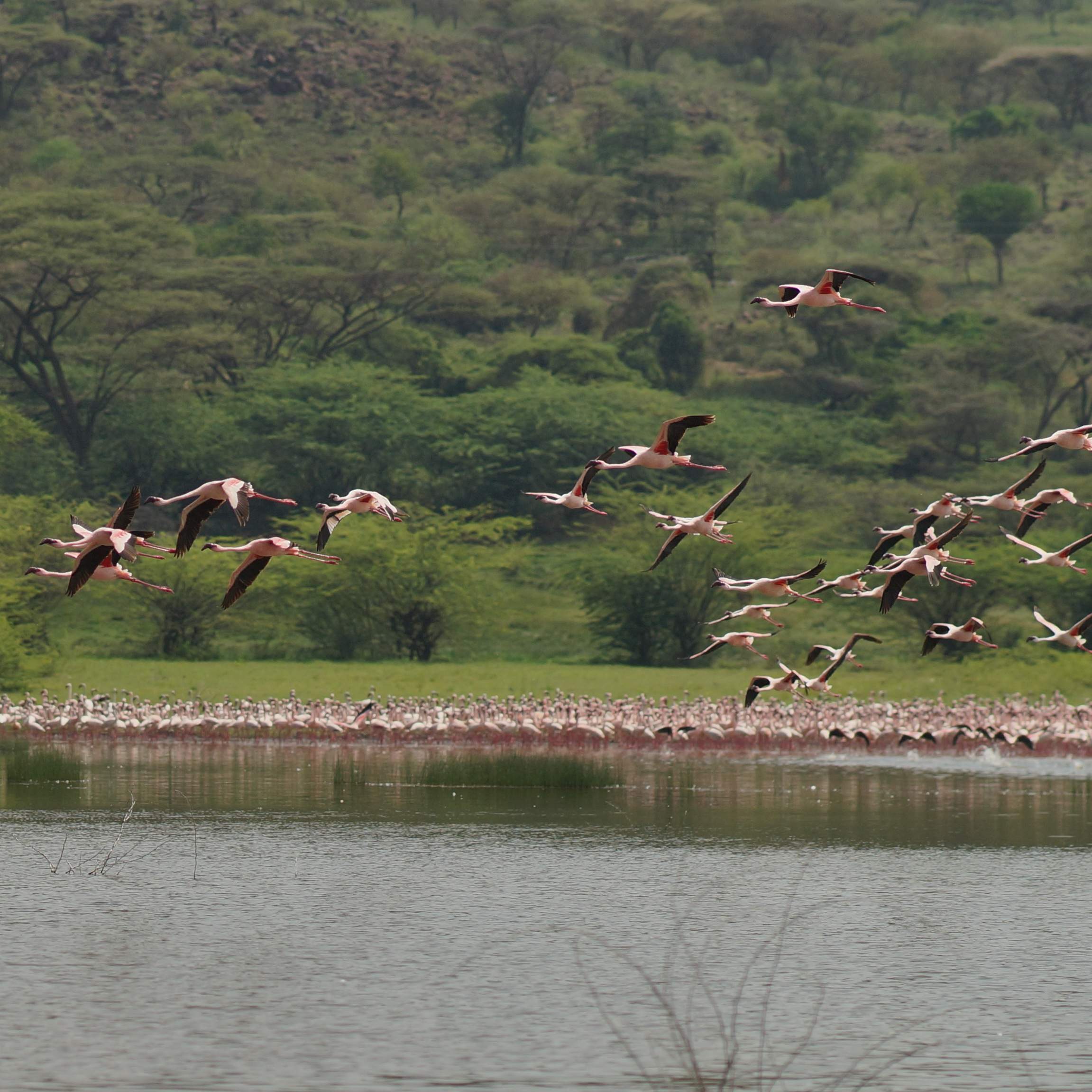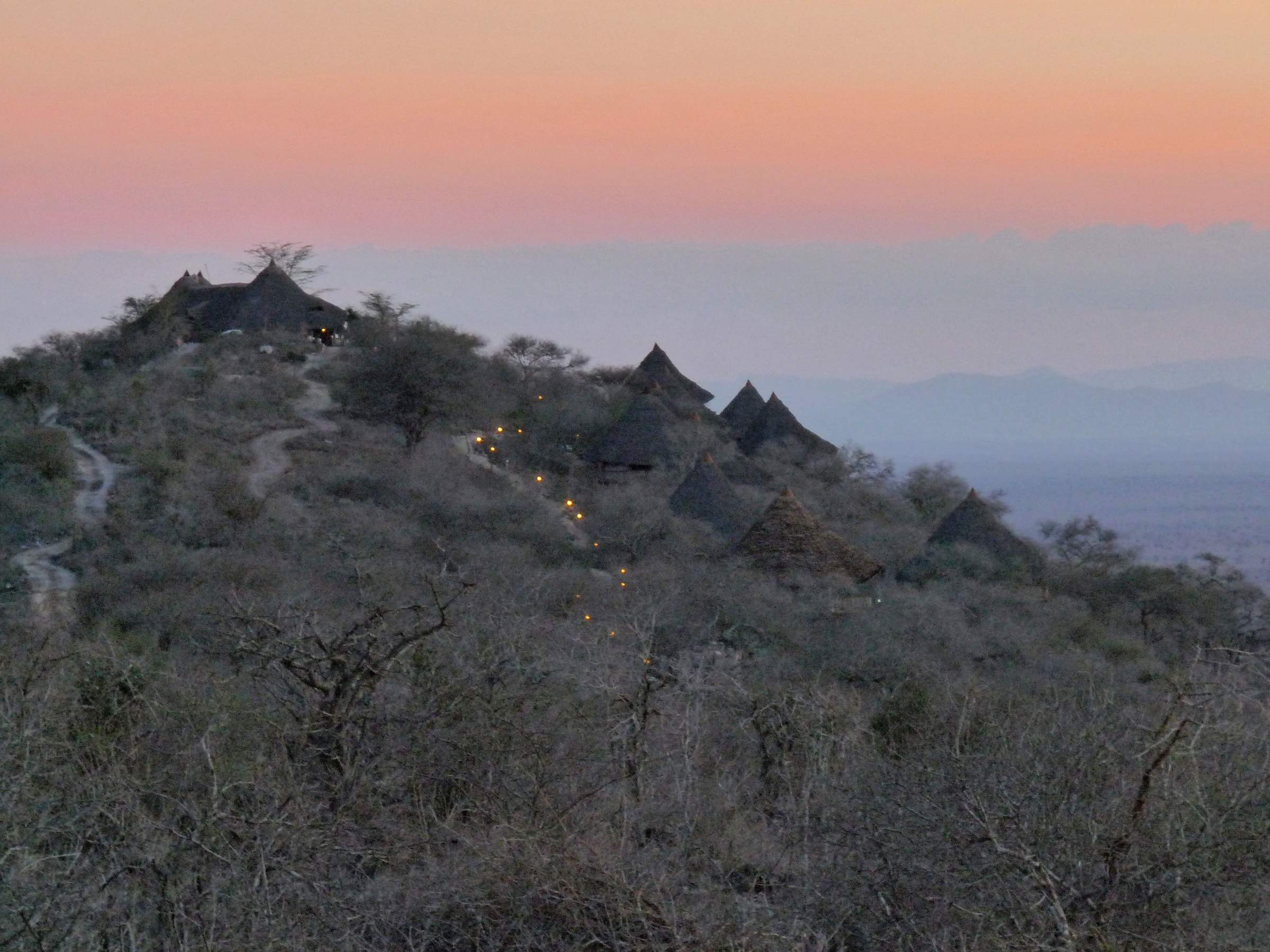Samburu National Reserve: in detail
Samburu safari holidays: the full story
North of Laikipia, the hot, dry, relatively low country (around 800m above sea level) that heralds Kenya’s vast northern deserts and semi-deserts is the traditional homeland of the Samburu people, who were drawn to this region by the reliability of the Ewaso Nyiro, northern Kenya’s biggest and least seasonal river, for watering their herds. The wildlife is plentiful here for the same reason – dozens of species of plains grazers and browsers gathering in the thick acacia and doum palm forest along the river banks to drink and seek shade.
Focusing on the river banks and a few kilometres of dry bush on either side, the 104km² Samburu National Reserve is one of a pair of much loved reserves in northern Kenya, the other half being the 131km² Buffalo Springs National Reserve, on the south side of the river. Downstream, on the right bank and across the highway, lies the less well-known, 239km² Shaba National Reserve, with its gaunt scenery. A 24-hour entrance ticket to any one of the reserves entitles you to visit the others during the same period.
The Ewaso Nyiro and its tributaries flow north through Laikipia from the Aberdare range and Mount Kenya in the central highlands, and the main river then elbows east through a series of ravines, before tumbling out onto the sandy plains of the Samburu ecosystem and then meandering into the semi-desert beyond where it finishes in a vast seasonal marsh, the Lorian swamp. Although the river is almost perennial, it sometimes dries up in January or February. It’s equally prone to flood, however, and in March 2010 and again in November 2011 it burst its banks with dramatic consequences, inundating safari camps and sweeping away the main bridge linking Samburu and Buffalo Springs reserves. The bridge, near the reserve headquarters, remained broken until February 2015, when it finally re-opened.
Safaris in Samburu National Reserve
Unlike some of the parks in southern Kenya where you can never be sure you’re in the best area, each of the reserves in the Samburu-Buffalo Springs-Shaba complex is small enough to explore quite thoroughly in a day or two. In practice, most visitors come to Samburu National Reserve itself, on the north bank of the river, where the majority of the region’s relatively few safari camps and lodges are located. It is also possible once again to visit the Buffalo Springs side of the ecosystem within the duration of a single game drive by using the reopened bridge across the river near the reserve headquarters.Game drives often follow the winding, sandy tracks close to the meandering river, where almost anything – from a pride of lions to a herd of elephants or a flight of graceful, leaping impala – can appear at any moment.
In the past, large variations in Samburu’s animal numbers (as the availability of water varies greatly through the year), have meant that wildlife viewing at Samburu could sometimes be disappointing. Our visits in the last few years in various seasons have, however, proved really rewarding, both in the variety and the numbers of the mammals and birds we’ve seen here.
Geography and landscapes of Samburu National Reserve
Scrubby, open bush country is the dominant theme in most of the reserve areas, with the fringing riverine forest of acacias, figs and palms extending anything from 50m to 200m back from the edge of the river.The Ewaso Nyiro River, while heading east, does so in a series of north-south loops, around the district’s rocky ridges and the meanders created by the river itself. The river is 50–100m across, shallow and dotted with sand bars. For much of the year, bigger animals can walk across, while in periods of drought, crocodiles and hippos bury themselves as far as possible under riverside overhangs, and elephants gouge wells in the dry river bed to reveal water.
From the south bank, the flattish Buffalo Springs Reserve rises very gently to the south, but there’s much more variety in Samburu National Reserve, which rises more steeply away from the river towards the Kalama Conservancy in the north.
Samburu landmarks
Dominating the landscape of the reserve away from the river are gaunt, rocky ridges, running north to south, the biggest of which, the knife-like Koitogor, forms a central feature that appears to transform from escarpment to pyramid and back again as you drive around it. Almost due north of Koitogor, about 20km away, stands the impressive mesa of Ol Olokwe, a huge slab of a mountain, like something out of Monument Valley in the USA. It’s part of the characteristic landscape of this ‘gateway’ to Northern Kenya and the route up to Sarara and Marsabit.The permanent Buffalo springs, after which Buffalo Springs National Reserve is named, are the main notable feature of the southern reserve in the pairing, and two are now walled, while a third breaks onto the plain and forms a small marshy waterhole that flows into the Ewaso Nyiro. One of the walled springs provides the water supply for the nearby small town of Archer’s Post; the other was formerly a natural swimming pool. Swimming is now prohibited – occasional crocs and the presence of predators by the waterhole make it far too risky.
Flora and fauna of Samburu
The river determines much of the character of the reserves’ plant life, but the annual rains in April and November (totalling around 300–400mm, or about one third of Nairobi’s rainfall) can turn the dry plains into swaying grassland in a matter of days. Over most of the reserves, scattered acacia trees and various scrubby bushes are the dominant vegetation, with denser stands of acacias, fork-trunked doum palms and wild fig trees hugging the river margins. If you’re in the Samburu area at certain times of year, you’ll witness the spectacle of various flowering trees and shrubs, including, during and after the April rains, the striking, pink desert rose (Adenium obesum), and, in November and December, the scarlet flowers of the cork bark tree (Erythrina burttii).On the large mammal front, Samburu is the key area for seeing all of Kenya’s northern varieties of plains game – the strikingly large, ‘pin-striped’ Grevy’s zebra, stretch-necked gerenuk antelope (often seen on its hind legs, browsing out of the reach of its short-necked relatives) the smartly fawn-coloured Beisa oryx and the seemingly designer-coated reticulated giraffe. All three species of big cat hunt in the reserves, with a good number of leopard always present in the wooded riverbank areas and several lion prides at home both north and south of the river and often using forest cover for their ambushes. Cheetah are harder to spot here, but reports from other visitors mean you will usually see them if they’re around. The dominant mammal of Samburu, however is the elephant, of which around 900 individuals spend all or part of their year in the reserve ecosystem, characteristically ‘engineering’ it with their massive strength – knocking over trees, ripping out saplings and gouging water holes in the sandy river bed when the river runs dry. Zoologist Iain Douglas-Hamilton has his research camp here and the Samburu elephants are now some of the most extensively studied in Africa, along with those of Amboseli National Park.
Birdwatching in Samburu
As well as the distinctive, blue-skinned Somali ostrich, which you’ll see stepping out across the plains, the Samburu ecosystem’s oasis of vegetation in this arid region supports a very wide range of smaller birds, and birdwatchers can expect to see several dozen species on the average game drive. You’re not likely to miss the big flocks of vividly plumaged helmeted and vulturine guinea fowl, while among the many birds of prey, pygmy falcon and martial eagle from opposite ends of the raptor spectrum are both easily seen, as are Kori, Heuglin’s and buff-crested bustards, and lots of weavers, shrikes, woodpeckers and flycatchers.The Samburu people
The camel-, cattle- and goat-herding Samburu people are closely related to the Maasai (they speak the same language, Maa), wear a similar traditional dress of blankets and beads, and maintain a very similar lifestyle – although they have been quicker to absorb non-traditional practices, such as farming and trading, into their economy. Despite the reserve’s name, the Samburu heartland is further to the north, and especially in the forest-flanked hills and mountain ranges that rise out of the desert. Nevertheless, at all the camps and gates you’ll meet Samburu staff, askaris (security guards), guides, spotters and rangers, and visits to Samburu villages are available – as are plenty of opportunities to buy Samburu crafts and beaded jewellery.Kalama and Westgate Conservancies
North of the national reserve, the land rises as you enter the Kalama Conservancy – a forbiddingly beautiful, rocky landscape with just one, spectacular camp, Saruni Samburu. Westwards, following the Ewaso Nyiro upstream, you enter Westgate Conservancy to reach the equally luxurious Sasaab Camp, high above the river. Good-sized herds of very rare Grevy’s zebras range across both conservancies, a combined region that forms one of the key sanctuaries for this highly endangered species. Kalama is also increasingly recognised for its outstanding leopard sightings, often close to the camp.Where to stay in Samburu
Our suggestions for safari camps in Samburu National Reserve
Our travellers’ wildlife sightings in Samburu
This is their success for sightings in Samburu National Reserve.
Click on a species for more detail. How we work this out.

100% success

100% success

100% success

93% success

93% success

90% success

61% success

61% success

23% success

23% success

17% success

11% success

9% success

4% success

0% success

0% success
